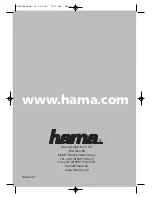
Technical Documentation
BLR-CM Modbus
Rev. 05
2018-09
5
2
Modbus/ RS485
The communication protocol Modbus RTU basically includes two levels:
The RS485 industrial standard defines the data transmission medium. Here, the physical data byte transmission
between the bus participants is controlled. This part of the protocol is embedded in higher Modbus levels.
The Modbus application protocol uses the underlying RS485 protocol for data transmission. It defines
commands (“Function Codes”, FC), addresses and data structures.
2.1
RS485 (defined in EIA485/ISO8482)
The communication standard RS485 uses two wires for data transport D(+) and D(-). Signals are transmitted with a
differential voltage level of at least ± 200 mV. Thus, the two logical levels “low” and “high” are possible. Due to its
differential transmission technology, the standard RS485 is particularly resistant to electromagnetic interferences and
wire lengths of more than 1000 meters may be reached.
The reactive power controller CM is compatible with the following transmission rates: 1200; 2400; 4800; 19200; 38400;
57600 and 115200 baud. All parity variations (even, odd and none) are supported.
In the RS485 standard, two transmission variations are defined:
2-wire RS485: This type uses two wires for the communication, which is why the same wire pair is used for
both data directions. Therefore, it is necessary to switch between sending and receiving at each device (half-
duplex mode).
4-wire RS485: In this case, a single wire pair is used for each data direction. However, due to the Modbus
protocol, it is also only possible to use the half-duplex mode again. For this reason, it is not possible to increase
the transmission capacity.
The power factor controller CM supports 2-wire RS485 only!
Next to the data lines, a common ground (GND) line must be interconnect all bus participants. It is not allowed to use
the cable shield for this purpose. The shield must be connected to GND, in order to reduce electromagnetic influences.
According to the RS485 standard, up to 32 devices can be connected to a single bus segment. This is done by connecting
all devices in parallel. This concerns the data lines D(+) and D(-) as well as the GND line.
In order to connect more than 32 devices to a bus, a “Repeater” must be used to between the bus-segments.






































